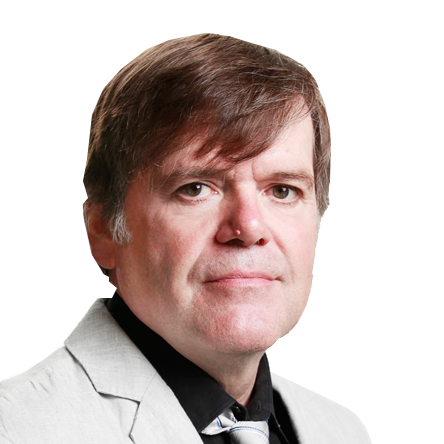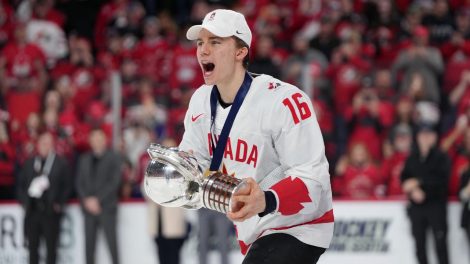The great fear of sportswriters is that they will get hung up en route by travel issues and the games will play out without them. I’ve had that feeling of dread three times and the common thread is Buffalo. On two occasions, it was snow and ice that forced schools to close and convinced sled dogs to phone in sick. And on those two occasions I was trying to get to games in Pennsylvania. I won’t keep you hanging … made it both times while the Star-Spangled Banner was being sung at a Penguins game in the old Igloo and a Johnstown Jets game at an arena haunted by the ghosts of Reg Dunlop, Morris Wanchuk and Dickie Dunn.
The third time, though, is the reason I’ve invited you here today. It pertains to the matter of the world junior championship. No, I’m not talking about this iteration of warring teenagers that has played out here in recent Arctic days. I made games here on bad roads but in plenty of time—as the old saying goes, fool me twice, shame on et cetera, et cetera. I am speaking of the first time the tournament landed in the self-described-though-who-knows-why Queen City, back in December 2010, a more innocent time, indeed.
Back when Canada was about to play its first game of the tournament, bare minutes away, and I was stuck in an epic traffic jam, not a flake of snow to be seen. I thought I had left plenty of time to make the game but three hours before the puck drop I was parked at the end of a five-kilometre long line that started at the Welcome to Fort Erie sign. Half an hour before the skedded time, I was sitting on the Peace Bridge and my fears compounded—I was at risk of missing the start of the game but also running out of gas somewhere over the river and further gumming up traffic while I was having a great view of the Buffalo skyline. Such was the rush of Canadian hockey fans over the border to see WJC hockey, which to that point had been played in in burghs across Canada but not commutable from southern Ontario.
Ever the pro, I made it just as they were rolling up the carpet for the ceremonial puck drop. It was as if they couldn’t start the game without me.
And during the next ten days or so, the downtown core of Buffalo was absolute gridlock. You were lucky to get parked in the 716 area code and good luck finding a table. It hinted at the potential of the tournament if it ever hit Toronto, which for better or worse, is the well-monied navel of the nation. Or rather, it at once hinted and exaggerated the potential.
When the 2015 tournament played out on the Montreal-Toronto axis with the medal round at what was then the Air Canada Centre. Canada won (thank you Connor McDavid) and the final against Russia was basically a sellout but there were a lot of ticket that went unsold. Two years later the tournament was back in the two cities with the final in Montreal. And you could have walked up to the window and bought good seats at the Bell Centre five minutes before the puck drop with the host nation taking on their American rivals, a game which should have filled the arena on xenophobia alone.
If anyone in the IIHF had noticed that maybe, just maybe, the locals had had their fill of the world juniors. You can, after all, get too much of a good thing. And you can get priced out of a good thing which was a chief complaint of hockey fans who attended or chose not to attend the 2015 and 2017 tournaments, Hockey Canada engendering no small amount of the constituency’s ire on that point.
I write all this because if I included the words Rene and Fasel in the first paragraph of this column you would by now be halfway through your crossword puzzle. Fasel, who presides over the IIHF, gave the hockey media an audience Wednesday and those of us who recorded the proceedings will forever have the record of Fasel pronouncing the 2018 tournament “a success” and our guffaws that followed. Games in the KeyBank Center have had a smattering of fans and not just for the European teams—Canada and the host Americans have played mostly in front of family and friends. The upper bowl has been vacant as have whole sections of the lower bowl. Not as many as one in five tickets were sold for Thursday afternoon’s game between Sweden and the host U.S. It was a semifinal but if you judged by the “energy” of the crowd it might have been a fifth-place game between opponents on a neutral site.
Fasel could have stopped there and probably should have but didn’t. The one halfway decent moment in this tournament had been the outdoor game between Canada and the defending champion U.S. at the Bills’ stadium last week. Despite awful conditions fans seemed happy with the occasion—aesthetically it was no masterpiece on the ice and those who shovelled the ice worked as hard as fourth-liners on a two-way contract. Still, it had something you couldn’t say about the rest of the proceedings: fun.
Well, of course, if you know anything about the IIHF and Fasel, you know that he would have hated it. Outdoor games are, of course, too NHL for his liking, even though international tournaments including world championships were played outdoors in Europe. Fasel made it plain that he doesn’t see another outdoor game in the cards anytime soon. Sigh.
So long as he is running the show and the IIHF is managed thusly, I will be arriving at world junior championship with time to spare, weather permitting.
[relatedlinks]







